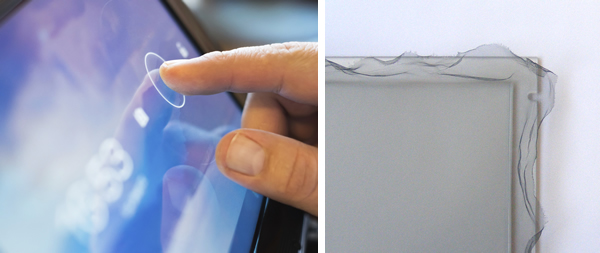How to shield against EMI
The effects of electromagnetic interference (EMI) are well documented, but what is less well known is the reason it is becoming an ever-increasing problem for manufacturers and users of electronic devices.
By Riaz Ahmed, R&D Manager, Parker Hannifin, Chomerics Division Europe
There appear to be two principal factors fuelling greater demand for optical products that are shielded from EMI: portable equipment that can be used in uncontrolled environments; and more rigorous electromagnetic compatibility (EMC) regulations.
The EU’s directive on EMC compliance (2014/30/60) means that failure to comply carries strong penalties. At the minimum, non-compliant products have to be recalled and replaced, with maximum penalties standing at a fine of £5000 and three months in prison. In addition, several acts of product-specific legislation govern EMI, including the Medical Device Directive (MDD), while there is also a general expectation among users that equipment should operate anywhere with zero interference or disruption.
As a result of these factors, shielded windows are no longer only required for military, aerospace or test and measurement applications. Instead, any optical equipment that today uses integrated displays must be as free from EMI leakage as possible.
Despite the fact that optical equipment is typically produced featuring built-in shielding against EMI, such as metal casings, metallised plastic mouldings, conductive gaskets and environmental seals, any enclosure featuring an aperture for a screen unfortunately has a weakness with regard to EMI. Moreover, the bigger the screen, the larger the problem.
Fitting a shielded window over the aperture in front of the display to restore the EMI-blocking capabilities of the conductive enclosure has become the accepted solution. Here, the quality of the window and the materials used can make a notable difference. In essence, a shielded window is a laminated clear panel comprising acrylic, polycarbonate and polyester, or a glass substrate material incorporating a conductive mesh. The mesh weakens any EMI signals that would otherwise pass through the gap between the screen and the casing by maintaining electrical continuity.
As a point of note, with this mesh there is a balance to be achieved between attenuating EMI and permitting enough light to reach the user's eye so that the display can be read in various operating environments. With this in mind, the size of the mesh aperture is vital with regard to the effectiveness of the shielding. Sure enough, a dense mesh would be very effective, but would reduce the illumination emanating from the display backlight by an unacceptable level.
Further factors governing the effectiveness of an EMI shield include electrical connectivity between intersecting wires, as well as the techniques and materials used for wire termination at the edge of the frame. The best material for shielded windows is glass, as it combines optical clarity with good scratch resistance. However, windows that make use of polycarbonate or acrylic materials are lightweight and impact/shatter resistant. They can also operate at temperatures up to +100°C, while depending on the application, coatings can be added that are hydrophobic, oleophobic and anti-fogging.
All of these factors were taken into consideration by Chomerics Europe, a division of Parker Hannifin, when designing its shielded cast windows. These products have been manufactured for over 10 years at the company’s Grantham facility, where only optically matched adhesives and optical-grade polycarbonate substrates are used to ensure the best performance. Chomerics also manufactures mesh from copper or stainless steel, which is blackened by anodising to minimise reflections and boost optical performance even further.

WIN-SHIELD Mesh 100P (pictured, above right) is the latest product from Chomerics in the battle against EMI. It has been developed for use in glass windows, plastic windows and shield equipment vents, and displays without compromising airflow or the user's viewing experience. Importantly, the mesh can easily be formed into shapes and, if required, stretched across small vent openings.
A differentiator of Mesh 100P is that it combines 55dB to 60dB (100 MHz to 1GHz) shielding effectiveness with <0.100 ohms/sq surface conductivity. Coated with an inert blackened polymer, the 61% open area copper mesh features 100 openings per inch (OPI) and 0.056mm (0.002 inches) wire diameter. The mesh is designed to reduce glare for better visibility, and not fade, degrade or react with moisture in the air. Featuring an operating temperature range of -40°C to +70°C, the shield is available in sheet form (maximum size 30,000 x 2,000mm) or can be supplied in custom die-cut shapes.
Also offered by Chomerics is WIN-SHIELD C, a cast monomer material that combines electromagnetic shielding with optical clarity. Display filtering in test equipment, medical instrumentation, public information displays and military radios and computers are among the typical applications.
WIN-SHIELD C is a single part material offering 90% light transmission and can be cast in thicknesses of between 1.5mm and 6.0mm. This is in contrast to most shielded window materials that consist of an electrically conductive medium such as a mesh laminated to a substrate. Capable of operating in temperatures from -60°C to +100°C, WIN-SHIELD C is suitable for deployment in a range of challenging environments.
Touchscreens are also available which can be simply 'dropped in' where EMI shielding is required. The screens feature integral EMI shielding with no air gaps or voids thanks to optical grade pressure sensitive adhesives, and are perfect for hand-held mobile devices, rugged LCDs, devices used in critical patient care environments, shielded cabinets and racks, and digital signage. They offer EMI shielding as thin as 0.177mm (0.007”), with 4 and 8 ohms/sq conductive films and plated stainless steel mesh of 50, 80 or 100 OPI.







